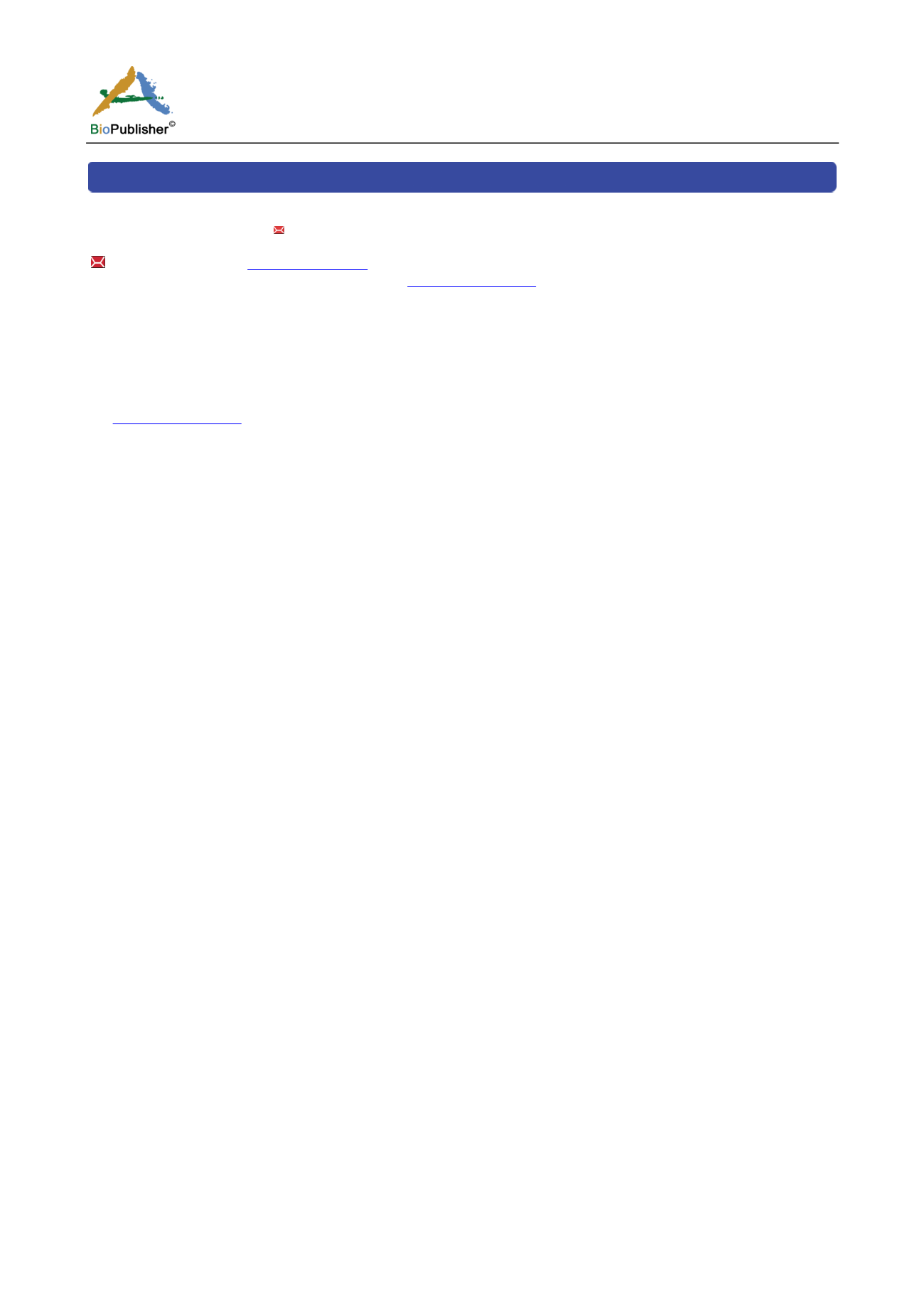
International Journal of Marine Science, 2017, Vol.7, No.41, 394-398
394
Research Report Open Access
Breeding of Shrimps
Metapenaeus affinis
(H. Milne Edwards, 1837) in Cages
Tariq Hattab Yasein Al-Maliky
Department of Marine Biology, Marine Sciences Center - University of Basrah, Iraq
Corresponding author email
International Journal of Marine Science, 2017, Vol.7, No.41 doi
Received: 16 Sep., 2017
Accepted: 12 Oct., 2017
Published: 20 Oct., 2017
Copyright © 2017
Al-Maliky, This is an open access article published under the terms of the Creative Commons Attribution License, which permits
unrestricted use, distribution, and reproduction in any medium, provided the original work is properly cited.
Preferred citation for this article
:
Al-Maliky T.H.Y., 2017, Breeding of shrimps
Metapenaeus affinis
(H. Milne Edwards, 1837) in cages, International Journal of Marine Science, 7(41): 394-398
(doi
Abstract
Breeding of shrimp
Metapenaeus affinis
in submersible cages (SC) and floating cages (FC). Grown were with an average
initial weight of 2.350 ±0.636 and 2.383 ±0.400, which were fed on the industrial diet prepared for 45 days. Some growth measures
as follows (FC and SC): weight increase (g) 1.880 ±0.170 and 0.884 ±0.011. Daily growth rate (% g/day) 0.042 ±0.004 and 0.020 ±
0.001. Feed conversion rate 2.476 ±0.487 and 1.462 ±0.350, relative growth rate (%) 82.031 ±14.993 and 38.008 ±6.858. While its
survival rate (%) was 90 ±7.071 and 75 ±7.071, all this respectively. Some environmental conditions measures were temperature
(°C)= 27.667 ±3.055, salinity (mg/l)=1.603 ±0.329, pH=7.783 ±0.226, dissolved oxygen (mg/l)= 6.863 ± 0.228. The results of the
statistical analysis showed significant (P
<
0.05) differences in FCR and in RGR between the shrimp cultured in the SC and FC,
while there were no significant differences in the rates of daily growth and increase in weight and survival rates and weekly weight.
Keywords
Metapenaes affinis
; Cages; Breading of shrimps
Background
Shrimps are cultured mainly in ponds, cages, pens, and raceways, the growth rate of penaeid shrimps in cages is
greater than ponds (Sivanandavel and Soundarapandian, 2010).
Most respondents were keen to get involved with prawn cage culture, because prawns are high-value fish. It is
reported that the current local market price for prawns (U.S. $4-6/kg) is four to five times higher than those for
Indian major carp or tilapia. Moreover, fishers reported that their income from fishing has fallen due to declined
catch because of overfishing, use of destructive fishing gear, environmental degradation, siltation and human
encroachment. On the other hand, fishers suggested that cage culture may require relatively modest investment, as
cages can be made locally with available bamboo and netting (Ahmed, 2010).
Shrimp culture in floating cages has been studied as an alternative to the traditional shrimp breeding by many
researchers (Li and Chen, 1987; Walford and Lam, 1987; Martinez-Cordova, 1988; Srikrishnadhas and Sundararaj,
1990). Krishnan et al
.
(1983) compared the growth of penaeide shrimps in floating cages and another fixed in the
waters of its inhabitants. Li and Chen (1987) studied his experience in the culture of Chinese shrimp in cages.
Martinez-Cordova (1988) studied the cultivation of blue shrimp
Penaeus stylirostris
in floating cages. While
Srikrishnadhas and Sundararaj (1993) reported studies on the growth of marine shrimp in floating cages.
Paquotte et al
.
(1998) studied the intensive cultivation of
Penaeus vannamei
shrimp in floating cages.
Sivanandavel and Soundarapandian (2010) studied the effect of density on the growth and survival of Indian
Penaeus indicus
shrimp in floating cages in the water. Post-larvae of shrimp
Penaeus monodon
were kept in
floating cages (0.5 m³) and were kept in ponds for 30 days, he survival rate was between 65 – 78% with a stocking
density of 100-400 PL/m² from 1. 5 g to 17.8 g at a density of 22 juvenile/m² in cages with dimensions of (5 ×4 ×
1) m³(Maheswarudu et al., 2016). The current study aims to give a picture of the possibility of using shrimps by
booking and raising them in cages in Iraqi waters.
1 Materials and Methods
Sample of shrimps, brought from the Shatt Kerma Ali, Basrah city - Iraq, were caught using cinnamon nets, where
shrimps were isolated and placed in a flask box and transported to laboratory. The experiment was designed on the


